Nature Effects
Generously helped by Exeter Cathedral, multimedia artist Mark Ware MFA facilitated the CEDA Nature Effects exhibition, an extension of his Arts Council England supported 'A Journey from A to B' project. Nature Effects is funded and promoted by CEDA and organised by CEDA's Craig Bowden
The exhibition runs until the end of June 2023 and on this page, we highlight more about the artists and the work on show at this historic Exeter landmark.
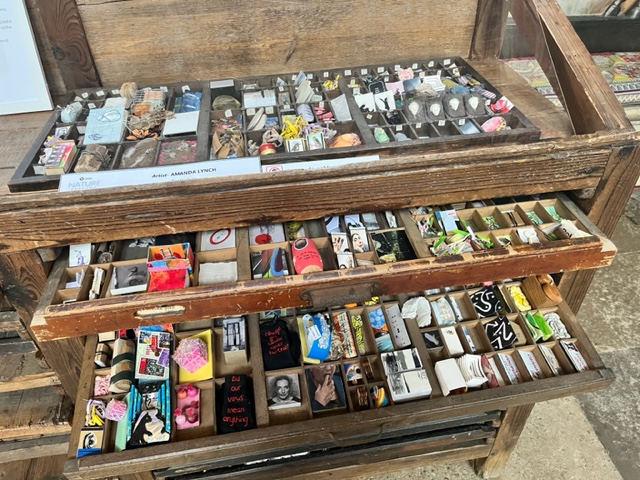
RESTRICTION- Amanda Lynch
An exhibition of miniature artworks displayed in a set of old printer’s letter press drawers. The drawers’ compartments originally housed the print typefaces, and the aim is for the tiny spaces to provide a reflective stimulus for the exhibiting artists, Inspired by the restrictions many of us have experienced during the covid-19 pandemic. The new works has been exhibited at Clayhill Arts, Bridgwater, Somerset and showcased online. The idea was devised by artist Amanda Lynch who became fascinated by the Mail Art Movement which began in the 1960s, when artists sent postcards with poems or drawings through the post rather than exhibiting through conventional channels. Amanda used the restrictions of the pandemic as inspiration for the exhibition while the usual ways of creating and exhibiting art are affected by the pandemic. As well as curating the exhibition, Amanda has set up the Correspondence Collective to bring together creative people to share knowledge and inspiration at a time when many artists are felt isolated.
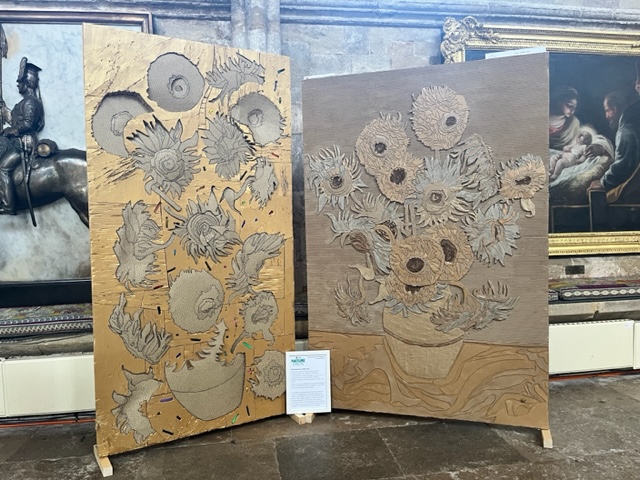
Cardboard Sunflowers- James Lake
This finished work, ‘Cardboard Sunflowers’, is an interpretation of Van Gogh's Sunflower painting using cardboard techniques to create pattern, texture, and form. This work examines how a traditional colour painting would translate through the cardboard process. I chose Van Gogh’s Sunflowers as it was already an iconic and perfectly balanced work. When we consider nature and the nature of things, Art plays a significant part in how we value what we see and feel. This work was made to help me process the illness and passing of a parent. Cardboard art shares this quiet, understated, but unquestionably valuable nature, like the oak seedling that will become a tree.
Exploding Van Gogh- James Lake
Nature is in all its shapes and forms is transient. Things come and go just as quickly and refine and redefine their appearance over time. Cardboard shares this transient, human quality, far removed from industrial process, human and fragile. Rearranging the elements of the ‘Cardboard Sunflowers’ this cardboard piece was built over a cardboard canvas that allowed me to break the surface; the elements of the picture are extruding and recessing into the viewing plan. All the sunflower elements are cut, folded, and covered to make a variety of spaces and volumes. I went and brought some cheap felt pens for the lids and embedded them into the sculpture to represent this feeling of the passing of time and the changing nature of creativity. From the early energies of youth, we are pushed towards routines; physical, psychological, and technology based, that make us look up for the ‘new’ best thing, we forget to look at where we came from and what is important.
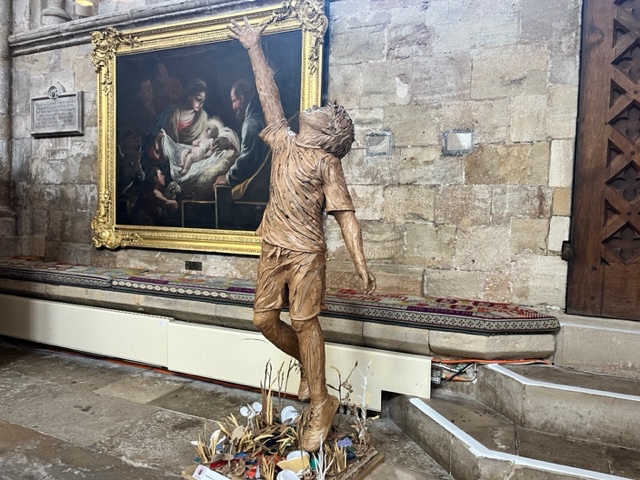
Youth- James Lake
Where are we and where do we want to end up as individuals, a society, and a planet? This presentation of the ‘Youth’ cardboard artwork is based on my son, who will eventually be jumping up to reach one of over 500 origami paper stars floating above him with the word ‘hope’ written on them in multiple languages. He is jumping out the metaphorical long grass that grows alongside a scattering of wild plants and the by-products of fast fashion and disposable technology components. This sculpture moves gently in relation to the ebb and flow of the environment it is placed in. The kinetic feature of the work combines with the delicate cardboard material to emphasize how precarious the aspiration of hope and reaching for the stars can be for our younger generation. Inscribing the definition of nature with shared goals and peace are the only real drivers for a better tomorrow.
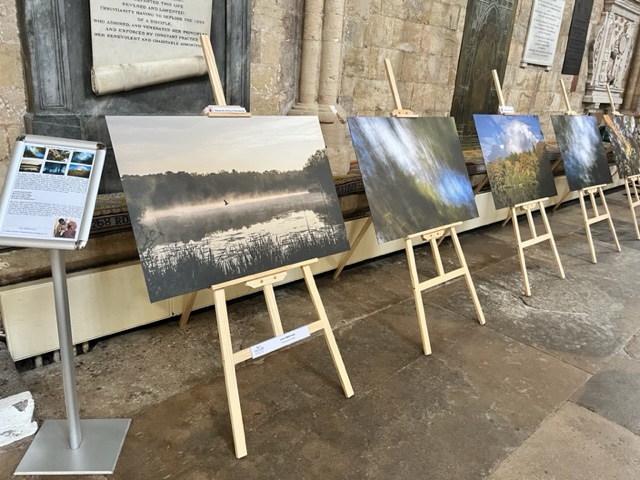
The Sound of Trees -Mark Ware MFA
‘I wonder about the trees.
Why do we wish to bear
Forever the noise of these
More than another noise
So close to our dwelling place?’ -Taken from The Sound of Trees by Robert Frost
Mark Ware studied Fine Art at Northumbria University and at The School of the Art Institute of Chicago for which he received a Fulbright Scholarship. His areas of study included sculpture, photography, film making, sound art, multimedia performance, art history, and film history & theory. Mark’s post graduate show at the School of the Art Institute of Chicago was awarded the prestigious James Nelson Raymond Travelling Scholarship. At the age of 39 Mark had a severe stroke. Since then, he has used art to explore his altered subject experience caused by brain injury. The Sound of Trees is part of Mark’s ongoing art science collaborations with neuroscientists and psychologists at the University of Sussex and Staffordshire University investigating how we respond to natural stimuli, exploring ways in which outcomes can be applied to nature-based design of interior architecture. The Sound of Trees was created to help explore existing research showing that just by looking at photographs of nature can have a positive effect on mind and body. The six images were captured at Stover Country Park local nature reserve. After this exhibition, The Sound of Trees will be on permanent display at the CEDA charity Exeter.
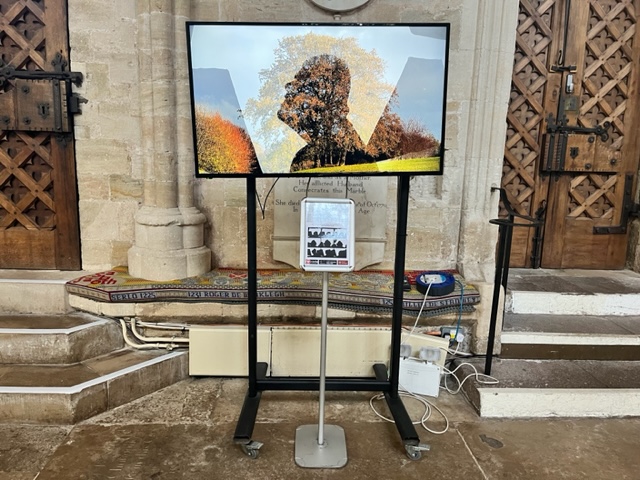
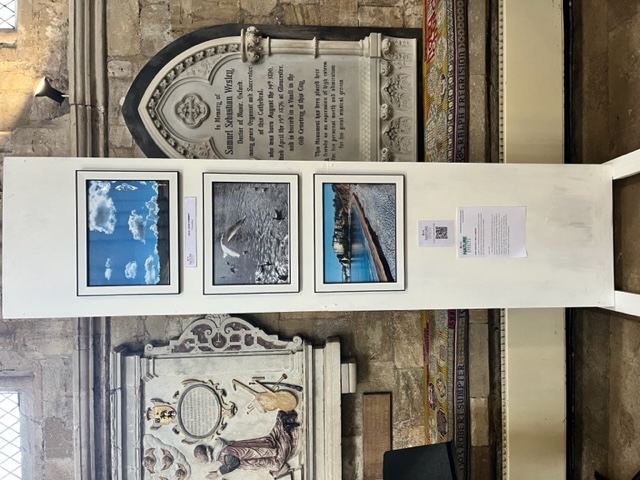
" Grounded " -Leigh Hammett
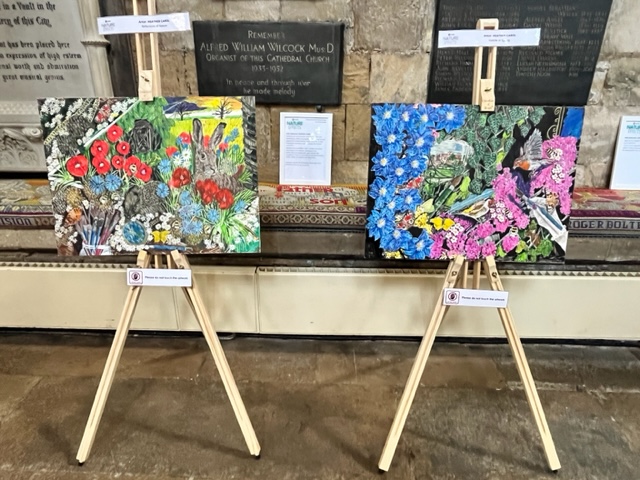
Parklife in Spring -Heather Carol
Many inks are dye based and many dye based inks can fade quitequickly. Pigmented inks are different as they are made with thesame pigments which are found in artist’s quality paints. Thedifference with pigmented inks is that the powdered pigments aremore finely ground allowing for very detailed work.Claybord is a specialist art board made from a hardboard base,covered with a layer of pressed china clay.The absorbent surface can be engraved to give additionaltextures to the artwork.This piece is loosely based on the plants and wildlife found inNorthernhay Gardens in Exeter. I am a full time poweredwheelchair user, and an artist and poet. I have created this pieceto show the value of urban parks to disabled people. They arespaces where disabled people can access the benefits of beingaround nature.Many wildlife species thrive in an urban environment, andamongst both wild and cultivated plants and I have reflected thismixture in this artwork.Many of my artworks have a Surrealist feel to them as I bringmany images together in one piece to explore experiences orideas.In this piece musical notes, a paintbrush, and a tube of paint areincluded to show the creativity that nature can inspire.I often include animals, birds and plants in an artwork for theirsymbolism and this artwork is no different. Butterflies symboliserebirth and transformation. The Goldfinch as a bird symbolisesfreedom, and it is a bird which carries important symbolism inmany cultures, including hope and joy
.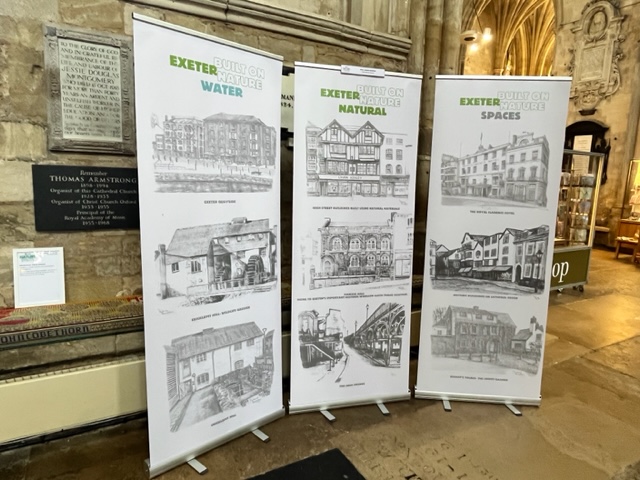
Exeter built on Nature -Aubone Braddon